Complete Solutions to EXERCISE of chapter ELECTROMAGNETIC INDUCTION of Class 12 book with complete answers and questions
| Class 12 | PHYSICS |
| Chapter | ELECTROMAGNETIC INDUCTION |
| PSEB | EXERCISE |
| Number Of Questions | 33 |
| Academic Year | 2023-24 |
Predict the direction of induced current in the situations described by the following Fig:

View SolutionPredict the direction of induced current in the situations described by the following Fig:

View SolutionPredict the direction of induced current in the situations described by the following Fig:

View SolutionPredict the direction of induced current in the situations described by the following Fig:
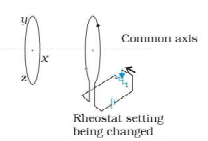
View SolutionPredict the direction of induced current in the situations described by the following Fig:
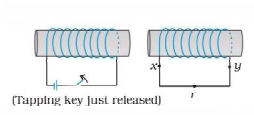
View SolutionPredict the direction of induced current in the situations described by the following Fig:

View SolutionUse Lenz’s law to determine the direction of induced current in the situations described by Fig. A wire of irregular shape turning into a circular shape. :
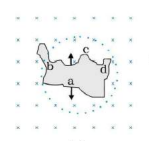
View SolutionUse Lenz’s law to determine the direction of induced current in the situations described by Fig.: A circular loop being deformed into a narrow straight wire. :
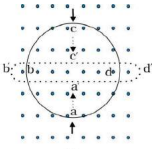
View SolutionA long solenoid with 15 turns per cm has a small loop of area `2.0 cm^2` placed inside the solenoid normal to its axis. If the current carried by the solenoid changes steadily from 2.0 A to 4.0 A in 0.1 s, what is the induced emf in the loop while the current is changing?
View SolutionA rectangular wire loop of sides 8 cm and 2 cm with a small cut is moving out of a region of uniform magnetic field of magnitude 0.3T directed normal to the loop. What is the emf developed across the cut if the velocity of the loop is `1 cm s^-1` in a direction normal to the longer side? For how long does the induced voltage last?
View SolutionA rectangular wire loop of sides 8 cm and 2 cm with a small cut is moving out of a region of uniform magnetic field of magnitude 0.3T directed normal to the loop. What is the emf developed across the cut if the velocity of the loop is `1 cm s^-1` in a direction normal to the shorter side of the loop? For how long does the induced voltage last ?
View SolutionA 1.0 m long metallic rod is rotated with an angular frequency of `400 rad s^-1` about an axis normal to the rod passing through its one end. The other end of the rod is in contact with a circular metallic ring. A constant and uniform magnetic field of 0.5 T parallel to the axis exists everywhere. Calculate the emf developed between the centre and the ring.
View SolutionA circular coil of radius 8.0 cm and 20 turns is rotated about its vertical diameter with an angular speed of `50 rad s^-1` in a uniform horizontal magnetic field of magnitude `3.0xx10^-2` . Obtain themaximum and average emf induced in the coil. If the coil forms a closed loop of resistance `10 Omega` , calculate the maximum value of current in the coil. Calculate the average power loss due to Joule heating. Where does this power come from?
View SolutionA horizontal straight wire 10 m long extending from east to west is falling with a speed of `5.0 m s^-1`, at right angles to the horizontal component of the earth’s magnetic field, `0.30 xx 10^-4 Wb m^-2`, What is the instantaneous value of the emf induced in the wire?
View SolutionA horizontal straight wire 10 m long extending from east to west is falling with a speed of `5.0 m s^-1`, at right angles to the horizontal component of the earth’s magnetic field, `0.30 xx 10^-4 Wb m^-2`, What is the direction of the emf?
View SolutionA horizontal straight wire 10 m long extending from east to west is falling with a speed of `5.0 m s^-1`, at right angles to the horizontal component of the earth’s magnetic field, `0.30 xx 10^-4 Wb m^-2`, Which end of the wire is at the higher electrical potential?
View SolutionCurrent in a circuit falls from 5.0 A to 0.0 A in 0.1 s. If an average emf of 200 V induced, give an estimate of the self-inductance of the circuit.
View SolutionA pair of adjacent coils has a mutual inductance of 1.5 H. If the current in one coil changes from 0 to 20 A in 0.5 s, what is the change of flux linkage with the other coil?
View SolutionA jet plane is travelling towards west at a speed of `1800 km//h`. What is the voltage difference developed between the ends of the wing 25 m long, If the Earth’s magnetic field at the location has a magnitude of `5 xx 10^-4T` and the dip angle is `30^@`.
View SolutionA rectangular loop of sides 8 cm and 2 cm with a cut is stationary between the pole pieces of an electromagnet. The magnetic field of the magnet is normal to the loop. The current feeding the electromagnet is reduced so that the field decreases from its initial value of 0.3 T at the rate of `0.02 T s^-1`. If the cut is joined and the loop has a resistance of `1.6 Omega` , how much power is dissipated by the loop as heat? What is the source of this power?
View SolutionA square loop of side 12 cm with its sides parallel to X and Y axes is moved with a velocity of `8 cm s^-1` in the positive x-direction in an environment containing a magnetic field in the positive z-direction. The field is neither uniform in space nor constant in time. It has a gradient of `10^-3T cm^-1`along the negative x-direction (that is it increases by `10^-3T cm^-1` as one moves in the negative x-direction), and it is decreasing in time at the rate of `10^-3T cm^-1`. Determine the direction and magnitude of the induced current in the loop if its resistance is `4.50 mOmega` .
View SolutionIt is desired to measure the magnitude of field between the poles of a powerful loud speaker magnet. A small flat search coil of area `2 cm^2` with 25 closely wound turns, is positioned normal to the field direction, and then quickly snatched out of the field region. Equivalently, one can give it a quick `90^@` turn to bring its plane parallel to the field direction). The total charge flown in the coil (measured by a ballistic galvanometer connected to coil) is 7.5 mC. The combined resistance of the coil and the galvanometer is `0.50 Omega`. Estimate the field strength of magnet.
View SolutionFigure 6.20 shows a metal rod PQ resting on the smooth rails AB and positioned between the poles of a permanent magnet. The rails, the rod, and the magnetic field are in three mutual perpendicular directions. A galvanometer G connects the rails through a switch K. Length of the rod =15 cm, B = 0.50 T, resistance of the closed loop containing the `rod = 9.0 mOmega` Assume the field to be uniform. Suppose K is open and the rod is moved with a speed of `12 cm s^-1` in the direction shown. Give the polarity and magnitude of the induced emf. :
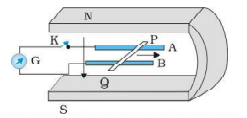
View SolutionFigure shows a metal rod PQ resting on the smooth rails AB and positioned between the poles of a permanent magnet. The rails, the rod, and the magnetic field are in three mutual perpendicular directions. A galvanometer G connects the rails through a switch K. Length of the rod =15 cm, B = 0.50 T, resistance of the closed loop containing the `rod = 9.0 mOmega` Assume the field to be uniform. Is there an excess charge built up at the ends of the rods when K is open? What if K is closed? :
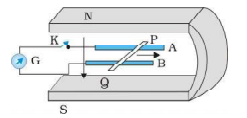
View SolutionFigure 6.20 shows a metal rod PQ resting on the smooth rails AB and positioned between the poles of a permanent magnet. The rails, the rod, and the magnetic field are in three mutual perpendicular directions. A galvanometer G connects the rails through a switch K. Length of the rod =15 cm, B = 0.50 T, resistance of the closed loop containing the `rod = 9.0 mOmega` Assume the field to be uniform. With K open and the rod moving uniformly, there is no net force on the electrons in the rod PQ even though they do experience magnetic force due to the motion of the rod. Explain. :
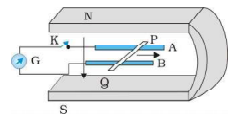
View SolutionFigure shows a metal rod PQ resting on the smooth rails AB and positioned between the poles of a permanent magnet. The rails, the rod, and the magnetic field are in three mutual perpendicular directions. A galvanometer G connects the rails through a switch K. Length of the rod =15 cm, B = 0.50 T, resistance of the closed loop containing the `rod = 9.0 mOmega` Assume the field to be uniform. What is the retarding force on the rod when K is closed? :

View SolutionFigure shows a metal rod PQ resting on the smooth rails AB and positioned between the poles of a permanent magnet. The rails, the rod, and the magnetic field are in three mutual perpendicular directions. A galvanometer G connects the rails through a switch K. Length of the rod =15 cm, B = 0.50 T, resistance of the closed loop containing the `rod = 9.0 mOmega` Assume the field to be uniform. How much power is required (by an external agent) to keep the rod moving at the same speed (=`12 cm s^-1`) when K is closed? How much power is required when K is open? :

View SolutionFigure shows a metal rod PQ resting on the smooth rails AB and positioned between the poles of a permanent magnet. The rails, the rod, and the magnetic field are in three mutual perpendicular directions. A galvanometer G connects the rails through a switch K. Length of the rod =15 cm, B = 0.50 T, resistance of the closed loop containing the `rod = 9.0 mOmega`. Assume the field to be uniform and the rod is moved with a speed of 12 cm/s. How much power is dissipated as heat in the closed circuit? What is the source of this power? :

View SolutionFigure shows a metal rod PQ resting on the smooth rails AB and positioned between the poles of a permanent magnet. The rails, the rod, and the magnetic field are in three mutual perpendicular directions. A galvanometer G connects the rails through a switch K. Length of the rod =15 cm, B = 0.50 T, resistance of the closed loop containing the `rod = 9.0 mOmega` Assume the field to be uniform. What is the induced emf in the moving rod if the magnetic field is parallel to the rails instead of being perpendicular? :

View SolutionAn air-cored solenoid with length 30 cm, area of cross-section `25 cm^2` and number of turns 500, carries a current of 2.5 A. The current is suddenly switched off in a brief time of `10^-3s`. How much is the average back emf induced across the ends of the open switch in the circuit? Ignore the variation in magnetic field near the ends of the solenoid.
View SolutionObtain an expression for the mutual inductance between a long straight wire and a square loop of side a as shown in Fig. 6.21. :
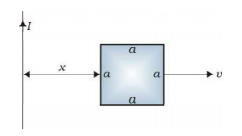
View SolutionAssume that the straight wire carries a current of 50 A and the loop is moved to the right with a constant velocity, `v= 10 m//s`. Calculate the induced emf in the loop at the instant when x = 0.2 m. Take a = 0.1 m and assume that the loop has a large resistance. :

View SolutionA line charge `lambda` per unit length is lodged uniformly onto the rim of a wheel of mass M and radius R. The wheel has light non-conducting spokes and is free to rotate without friction about its axis (Fig. 6.22). A uniform magnetic field extends over a circular region within the rim. It is given by, `B = -B_0k` `(r oversetlarr a, a < R)` = 0 (otherwise) What is the angular velocity of the wheel after the field is suddenly switched off? :
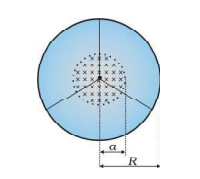
View Solution
EXERCISE questions and complete solutions for chapter ELECTROMAGNETIC INDUCTION of PSEB of Class 12